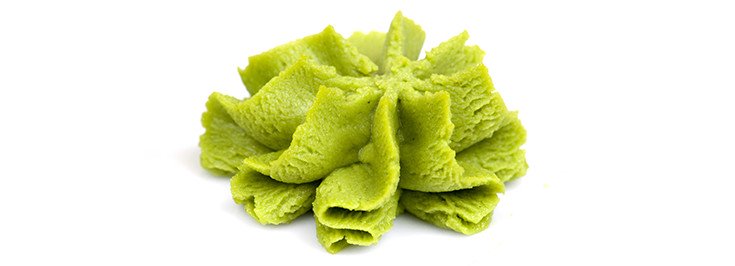Spicy Condiment Fights Deadly Pancreatic Cancer with Accuracy

If you love to eat sushi, and particularly the green mustard with a kick which comes with most Japanese dishes – wasabi – then you could very well be fighting one of the most deadly types of pancreatic cancers around.
Otherwise known as Japanese horseradish, wasabi has been shown to kill human pancreatic cancer cells with accuracy. Specifically, the active compounds of wasabi:
“. . .showed that compounds 6-MITC and I7557, but not I7447, inhibited viability of both PANC-1 and BxPC-3 cells. Morphological observation showed mitotic arrest and apoptosis in 6-MITC- and I7557-treated cells. These two compounds induced G2/M phase arrest and hypoploid population. Percentages of ALDH-positive PANC-1 cells were markedly reduced by 6-MITC and I7557 treatment. The expression of CSC signaling molecule SOX2, but not NOTCH1, ABCG2, Sonic hedgehog, or OCT4, was inhibited by 6-MITC and I7557. In conclusion, wasabi compounds 6-MITC and I7557 may possess activity against the growth and CSC phenotypes of human pancreatic cancer cells.”
In other words, when you eat wasabi, you are protecting your body and prohibiting the creation of pancreatic cancer cells from forming.
As has been pointed out, pancreatic cancer is one of the most difficult types of cancers to ‘cure’ with conventional medicine. Even after aggressive chemotherapy and radiation treatments, most pancreatic cancer patients are not given more than 5 years to live. Perhaps the specific anti-cancer compounds in wasabi could help bring us closer to a solution for pancreatic cancer patients.
Related: New Test Could be Key in Diagnosing Pancreatic Cancer Super Early
As Green Med Info’s Sayer Ji has pointed out:
“A new study found that the two studied wasabi derived compounds (6-MITC and I7557) were capable of reducing the CSC population and reducing the expression of a key CSC signaling molecule known as SOX2, which is a transcription factor found in both undifferentiated embryonic stem cells and cancer stem cells and which is essential for self-renewal and the cell’s ability to differentiate into other cell types (i.e. pluripotency).”
Instead of a sad prognosis for a shortened life, a little Japanese horseradish offers incredible hope for those who have been given a pancreatic cancer diagnosis. The spice turmeric has also been shown to effectively target pancreatic cancer cells.

Just don’t be like an inexperienced friend of mine and mistake the wasabi for guacamole!
I like wasabi, but someone Else can have the sushi.
I have heard that the wasabi we are familiar with is actually not the real deal. Is this true and where can we find real wasabi?
it depends… the “ingredients” should read : Wasabi if horseradish is 1st, yeah it’s worthless health-wise AS wasabi… if wasabi is 1st it’s BETTER than if horseradish is listed 1st but not as good if WASABI is the only ingredient.
Please don’t assign freelance humanitarians to write articles about health and science. The headline is the only accurate part of this article. Read the scientific study at http://www.ncbi.nlm.nih.gov/pmc/articles/PMC3918374/. It shows that wasabi compounds, applied in a solution to cancer cells in a lab, appear to destroy the cells. That is in no way the same as saying, “eat wasabi, you’ll never get pancreatic cancer.” Likewise the study about turmeric–that was based on injecting lab rats three times a week with a solution of curcumin dissolved in fat. These spices may well have health benefits when eaten, but it doesn’t translate.
Turmeric/Curcumin/Cumin = Healthy body, leading to make good decisions, such as obtaining a degree of Arts. To write with authority, the author must research using critical thinking skills and write to convince readers the article is worthy of their attention. By the way, natural does NOT necessarily mean healthy —what’s natural? Opposite to synthetic?